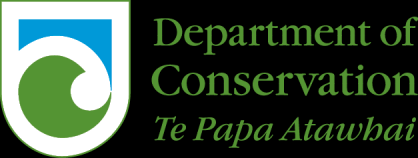
OIAD-1461
26 October 2021
Bridget Percy
[FYI request #16910 email]
Tēnā koe Bridget
Thank you for your Official Information Act request to the Department of Conservation,
received on 27 September 2021, in which you asked:
1. How many monitored & unmonitored kiwi (of the 154 that have been bred at, or brought
into, Pukaha Mt Bruce since 2005) are there currently:
a) Known to be living in the Pukaha Forest? b) Currently living in enclosures at Pukaha Mt Bruce?
2. In Hayden Barrett's response (dated 23 June 2020) to my last OIA he indicated that
known breeding pairs 'were left to naturally incubate and raise their chicks last season'
and that their 'nests were monitored with cameras'.
a) How many of these breeding pairs were there and how many chicks did they
raise last breeding season?
b) When so much emphasis is placed on only releasing kiwi hatched in captivity
once they reach a target weight at which they can 'fight off predators', why
are kiwi eggs and chicks being left in the Pukaha Forest when the extremely
high rate of kiwi deaths there indicates that this is not best practice?
3. How many kaka do staff currently estimate there are living in the Pukaha Forest and
how many of these are coming to the 3pm feeding station each day?
4. Why are kaka being bred in the aviary at Pukaha when staff last estimated that there
were 150 living in the forest?
Your questions and our responses are listed below:
1. How many monitored & unmonitored kiwi (of the 154 that have been bred at, or brought
into, Pukaha Mt Bruce since 2005) are there currently:
a) Known to be living in the Pukaha Forest?
There are no kiwi transmitters in the reserve at present. The population is monitored
through an annual bio-acoustic survey. The survey in June 2021 recorded 114 North
Island brown kiwi calls, 82 from males and 32 from females. This would not include
juvenile kiwi who do not call until they are a year old.
b) Currently living in enclosures at Pukaha Mt Bruce?
There are two kiwi in enclosures, and two kiwi in the nocturnal house.
2. In Hayden Barrett's response (dated 23 June 2020) to my last OIA he indicated that
known breeding pairs 'were left to naturally incubate and raise their chicks last season'
and that their 'nests were monitored with cameras'.
a) How many of these breeding pairs were there and how many chicks did they
raise last breeding season?
We were aware of the physical location of one breeding pair only. This pair was
monitored with a nest camera in the reserve in 2020. Four chicks left the burrow of that
pair in that breeding season.
b) When so much emphasis is placed on only releasing kiwi hatched in captivity
once they reach a target weight at which they can 'fight off predators', why
are kiwi eggs and chicks being left in the Pukaha Forest when the extremely
high rate of kiwi deaths there indicates that this is not best practice?
For the past two years Pūkaha has used acoustic recorders to count kiwi. This is an
effective method for counting kiwi but has been carried out late in the season which
does not allow transmitters to be placed on birds before breeding.
The monitored pair have already raised 11 chicks since 2015 and their genetics are
well represented in the population, so Pūkaha no longer deemed it necessary to
artificially incubate their eggs to increase their chances of survival.
Pūkaha has extensive predator management across the reserve and pest incursions
are very rare. Incursions are detected quickly with cameras, but one ferret can quickly
kill one or more kiwi in a few days before being trapped.
3. How many kaka do staff currently estimate there are living in the Pukaha Forest and
how many of these are coming to the 3pm feeding station each day? The number of kaka in the reserve varies annually as they leave before winter and
come back for breeding in spring. The staff at Pukaha report that they currently see
12-15 every day at the feeding station and many more out feeding on natural food in
the forest.
Kaka numbers were last counted systematically in 2011 when 166 kaka were estimated
in the Pūkaha Mount Bruce Reserve with a 95% confidence interval of 103-268. Kaka
fly long distances during the day, so an exact number is impossible to obtain.
As kaka do appear abundant in the reserve, a reserve-wide study has not been deemed
necessary to calculate exact population size. However, a subsequent census is
planned soon.
Kaka that have been monitored at Pūkaha in the past were fitted with transponders and
then radio-tracked by staff. This intensive monitoring of individuals is intrusive to the
birds and expensive, and as the population of wild kaka at Pūkaha is now well-
established it is no longer deemed necessary.
4. Why are kaka being bred in the aviary at Pukaha when staff last estimated that there
were 150 living in the forest? Kaka are being bred for release at other sanctuaries to establish further populations in
the North Island and to support other facilities.
Page 2 of 3

Please note that this letter (with your personal details removed) may be published on the
Department’s website.
Nāku noa, nā
Jack Mace
Director Operations, Lower North Island | Kaihautū Matarautaki Kāhui Matarautaki, Mai i Potaka ki te raki,
ki Te Upoko o Te Ika ki te tonga, ki Turakina ki te hauāuru, ki Rēkohu/Wharekauri ki te rāwhiti
027 201 7394 |
[email address]
Page 3 of 3

